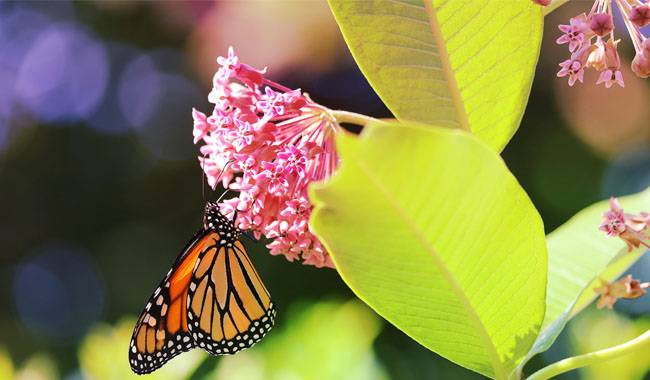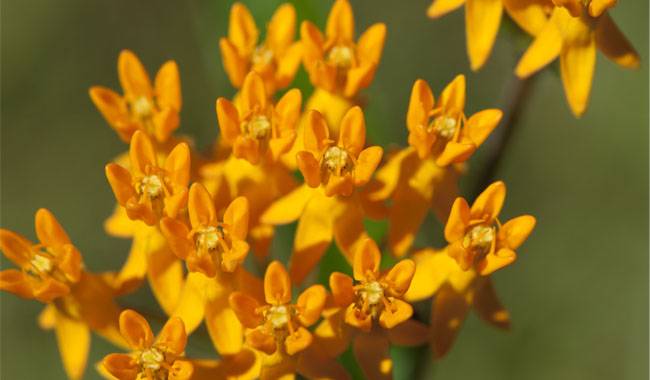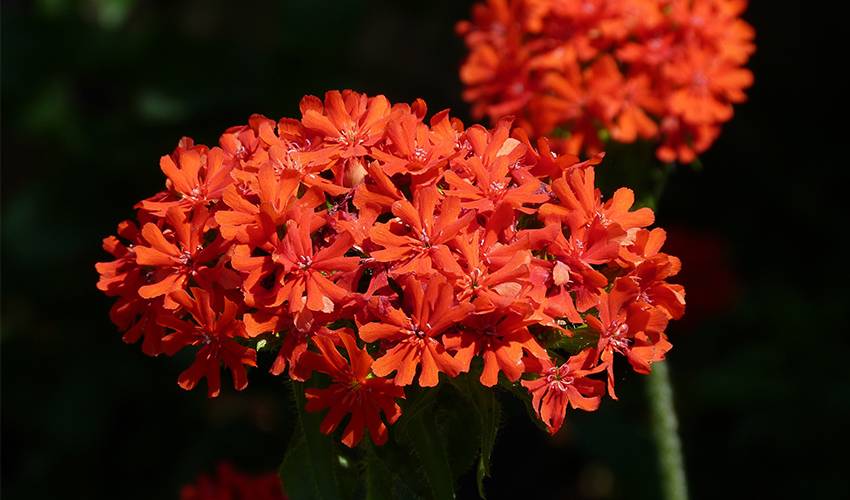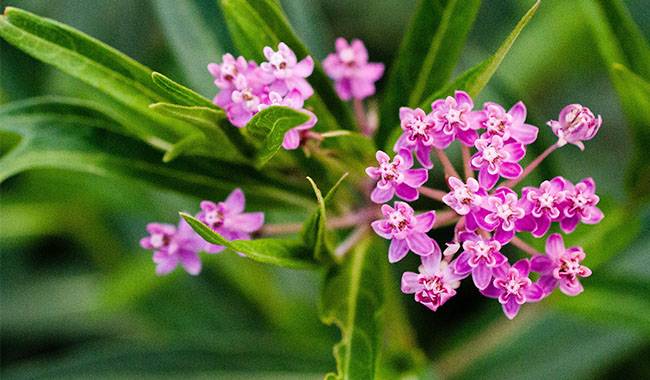
You might know how to grow beautiful milkweed (Asclepias), but do you know how to take care of milkweed plants? This article has the answer for you.
The legendary Asclepias lives up to its name as one of the most “wild” beautiful garden plants. The unruly temper and expansive tendencies of this original garden beauty are not recognized in room culture.
By taming Asclepias and moving it to pots and containers, you can solve many problems not only in cultivation. After all, it raises Asclepias flowers indoors appears not as a landscape “wild” miracle, but as a truly beautiful flowering star.
INDOOR RELATIVES OF THE HORTICULTURAL PLANT ASCLEPIAS
Asclepias represents the Cuthraceae (Apocynaceae) family in indoor cultivation. In nature, Asclepias cassava is found mainly in subtropical and tropical climates, in both Africa and the Americas.
Few plants can boast such an eloquent folk nickname, denoting both the original fruit and the seed. Asclepias is both a goldfinch flower and a goldfinch herb.
Even the official name of the plant is subject to considerable confusion, as Asclepias is simply a variant of the botanical name transcription. Again, the plant can be called both Asklepias and milkweed.
The first thing that comes to mind when you think of Asklepias, or milkweed, is the unparalleled tenacity of wild milkweed.
And this culture, which is widespread even in our natural world, is undeniable for the status of this star plant for garden design style when it is actively tamed and transformed into garden plants, breeding new forms and species.
Indoor Asclepias, unlike garden Asclepias, are still very rare. Although we are only talking about different species of this genus, there is still no need to confuse these plants with each other.
While Blood Red and Syrian Asclepias are mainly grown in the garden, the charming, beautifully flowered Asclepias, a species that is almost uncultivated in open soil, has found new life in the room.
Asclepias curassavica is the only one of the Asclepias that can be cultivated in pots. And it is also the most spectacular species in terms of the beauty of its flowering period.
Semi-shrub with densely pubescent, rather thin shoots reaching a height of 28-30inch (70-80 cm) when not formed.
Under any trauma, it actively shows the vine. The leaves sprout from the lower part of the shoot and are arranged in pairs to form a beautiful huge crown.
The leaves grow to 5inch (13cm) long with short petioles. The lance-shaped leaves sit densely, highlighted not by their shape, but by their bright concave veins and rich dark green, grassy tone. The pale reverse, almost gray color, does not detract in any way from the beauty of the greenery.
Asclepias’ flowering period will continue indoors throughout the year, but due to reduced sunlight hours in the winter, the plants will stop the flowering process and be forced into a state of relative rest.
The inflorescences of this Asclepias are pristine. They bloom at the tips of the shoots and are crowned with densely arranged star flowers up to 4inch (10cm) in diameter.
The bright, dark, orange, or red petal-like bracts and handsome, plump centers give each flower a jewel-like beauty.
From a distance, the flowers appear fluffy due to their openwork structure and even distribution among the flowers. But up close, one cannot help but marvel at the elegance of the individual flowers.
The orange-yellow-red “fiery” hues of Asclepias curaçava contrast perfectly with the bright herbaceous tones of the foliage. The rich fragrance adds to the beauty of Asclepias, attracting rare species of butterflies and swarms of insects to the garden.
Asclepias can be used as a summer plant in the garden or as a potted plant in the garden. When placing it on the balcony or in the garden, it is worth remembering that mass attention of insects can significantly spoil the holiday, so it is better to place Asclepias in places frequently visited by a variety of useful (and not so) guests will not disturb the owners of this plant themselves.
But even when growing indoors, it is important to take into account that Asclepias plants are large perennials, and the size of Asclepias plants is closer to the caddis summer solstice than to the ordinary indoor crops. They need to be given enough free space and take into account that they take up a lot of space and do not fit in small rooms.
Asklepias sap contains strong irritants. Handle with care to adequately protect the skin and mucous membranes.
ASCLEPIAS IN THE CARE OF THE HOME
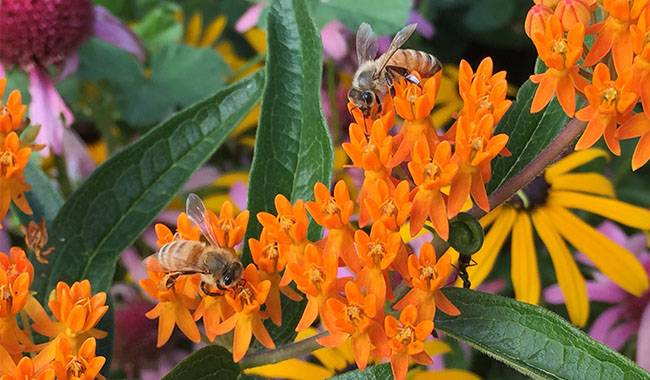
Although Asclepias are mainly associated with garden plants, the charming curaçava Asclepias in the room reveals the true beauty these amazing plants represent.
In indoor culture, Asclepias are neither perennials nor annuals: they are capable of flowering for more than a year, but they quickly degenerate and require regular replacement with new shrubs. Short-lived is the only serious drawback of the plant, which does not require much temperature and care.
Lighting of Asclepias
When cultivating this plant indoors, it is worth choosing the brightest and sunniest windowsill. Asclepias grows well in diffused light, but it achieves maximum decorative effect only on the south-facing windows.
Artificial extra light is hardly noticed, Asclepias needs good natural light.
Bright light is what the plant needs all year round. In winter, Asclepias flowers are moved to the brightest part of the southern windowsill.
A comfortable temperature regime
Asclepias’ endurance is fully demonstrated by the perfect adaptation to any temperature during the vegetative active period. It is not necessary to create any special conditions for Asclepias plants: Asclepias plants feel good in any warm room, it is not afraid of heat, but does not like temperature differences. The minimum allowable air temperature for Asklepias is 64°F (18°C) from spring to fall.
Winter maintenance mode selects low or moderate room temperature. the minimum temperature at which Asclepias feels good is 55°F (13°C). Ideally, consider wintering at 59-64°F (15-18°C).
If the temperature rises above that, the plant will need a corresponding increase in air humidity. However, in general, it is perfectly possible to overwinter even under normal room conditions.
Asclepias watering and air humidity
In indoor culture, this plant retains not only the drought tolerance of its garden counterparts but also their dislike of humidity.
Any over-watering, not to mention waterlogging of the substrate, can lead to the death of this plant. Asclepias should be watered carefully even during the flowering season.
The substrate in the pot should be partially dry between waterings. The soil moisture should be stable throughout the flowering period. When it stops, the plant shifts into winter mode, but the soil humidity does not decrease strongly enough to completely dry out the substrate, only to reduce watering compared to summer care.
For Asclepias, you need to carefully control the water quality. It should not only have soft characteristics but also be warmer than the air indoors. Watering with cold water can cause flowering to stop or health problems for Asclepias indoors.
Although Asclepias is actually an outdoor plant, it prefers a high humidity room form. It does not need to be grown in a closed cabinet or have a humidifier running constantly.
During periods of drier air, it is sufficient to introduce spraying into the care plan. The more often the leaves are sprayed, the more fascinating the greening effect of Asclepias will be.
When spraying, make sure that water droplets do not get on the inflorescence during flowering. Be sure to spray during the heating season, warm winters, and hot summer days.
Fertilization of Asclepias trees
Under conditions of annual transplanting and the use of a very fertile substrate, it is possible not to fertilize the plants. However, Asclepias flowers are at their most lush with regular fertilization throughout the flowering period.
Asklepios bloom and develop vigorously with standard fertilization for them, as often as 1 every 2 weeks. Fertilization is best avoided during the dormant period, or better yet, throughout the fall and winter when day length is reduced.
Pruning and rejuvenation of Asclepias
Asclepias grows in dense bushes and looks quite compact and lush from nature. However, indoor plants tend to degenerate, elongate and have a sloppy appearance.
To maintain the density and beauty of the shrub, it is recommended that Asclepias be pruned each spring after transplanting. The desired bush shape and size can be achieved by controlling the size of the plant when pruning. The more elongated the shoots are, the shorter the “stump” can be left.
Even with annual pruning, Asclepias quickly lose their decorative qualities, shoots become thicker and flowering is hindered. Once the plant begins to look neglected and does not regain density and lushness after pruning, it is worth taking rooted cuttings or growing them by other methods instead.
REPLANTING ASCLEPIAS
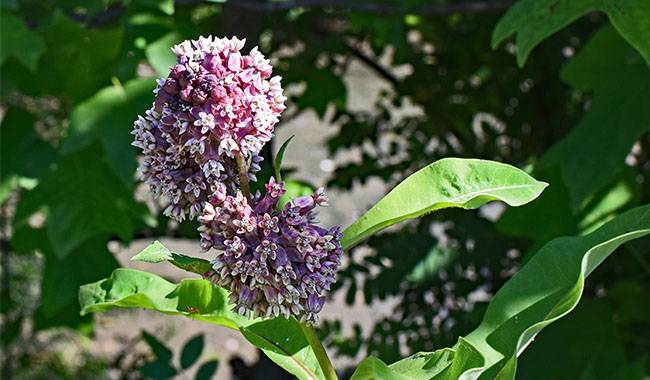
As with other houseplants, it is best to transplant Asklepias only in the spring, at the very beginning of its active development phase. For this perennial, it is best to use the length of light as a guide: as soon as the sun warms up and light improves in the spring, Asklepias can be transplanted into a new container.
The plant does not require annual replanting. Like any herbaceous perennial that has adapted to limited soil conditions, potted Asclepias can be grown in a container as long as free soil is available. Only when the plant has made full use of all available soil space can it be transplanted into a new container. In years when the container does not need to be replaced, only the top substrate needs to be replaced.
For indoor Asclepias, it is advisable to choose large and spacious containers. Compared to the previous containers, the pots have an increased diameter of 1.6-2inch (4-5cm).
For Asclepias, the main characteristic of the soil is nutrition. The plant develops well in any general-purpose loose soil mixture, either in purchased or individually mixed substrates. A simple mixture of equal parts of turf and leaf soil, with half parts each of humus, sand, and peat, can be made for the plant.
Asclepias plants are not transplanted, the earth is not destroyed when transplanting, and loose broken soil is removed.
DISEASES AND PESTS ASCLEPIAS PLANTS
Asclepias is surprisingly resistant even in indoor crops. In very dry air and hot conditions, they suffer from spider mites, and in waterlogged soil – from decay. The latter problem must be dealt with by emergency transplanting and corrective care, but mites are easily dealt with by treating with insecticides and increasing air humidity.
COMMON PROBLEMS IN CULTIVATION
Leaf drop when the substrate dries out.
Flower stems dry out and stops flowering with improper watering.
Propagation of Asclepias indoors
Growing your own potted Asclepias can also be done from seed, using the more complicated method of taking cuttings. The difficulty really does not arise with the rooting method, but with the release of latex and the time, it takes for the cuttings to dry. Rooted cuttings are taken in the usual sand bark substrate in a hood at 70°F (21°C) high temperature. Plants are planted immediately after rooting.
Asclepias seeds do not need to be pretreated. The best date for sowing in March or April. Sowing is done in a sand and peat mixture or soil, which consists of equal parts of common sprouting substrate and sand.
The substrate should be intensively moistened before sowing. Shallow sowing, covering the seeds with 1-2 mm of sand. For germination, the containers are covered with glass or film and removed daily to dry.
Seeds of Asclepias germinate within a month, but not regularly, sometimes the last germination takes up to 3 months. Piggyback the seedlings in small containers, one at a time, as soon as the plant emerges with one or two true leaves.
Already at the stage of thickening young plants, it is worth pruning the tips of the shoots. Buds after sowing bloom the following year, and under favorable conditions, 5-6 months after sowing in the current year (garden buds bloom only in the third or fourth year).
Powerful canopies of Asclepias plants can be divided into 2-4 divisions, each of which is grown as a separate plant. To maintain the ornamental value of the divisions, prune them immediately and ensure high air humidity, cool conditions, and moderate watering before acclimatizing and starting active growth.




